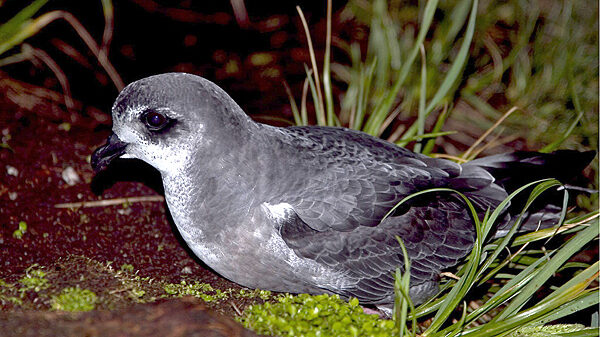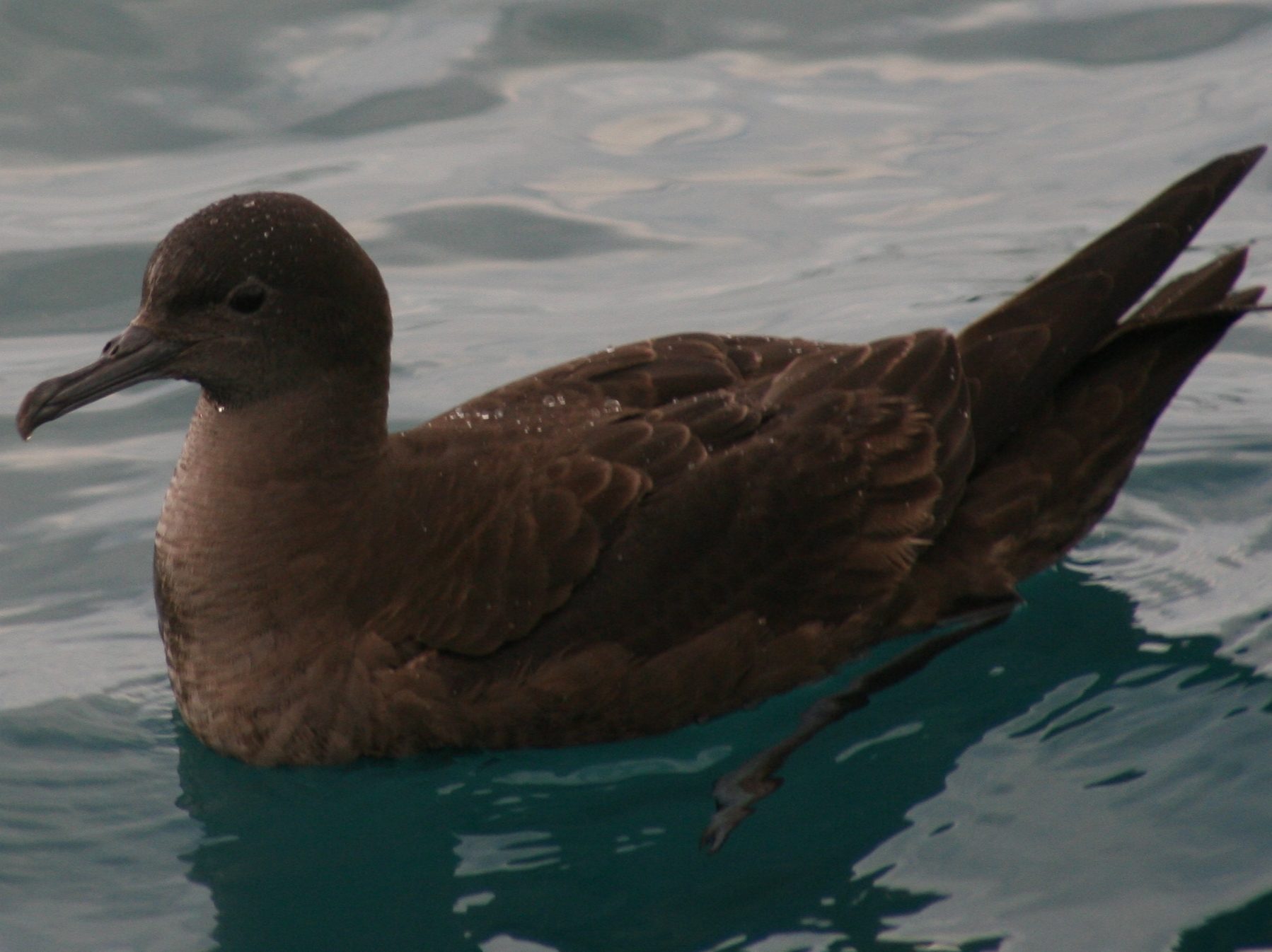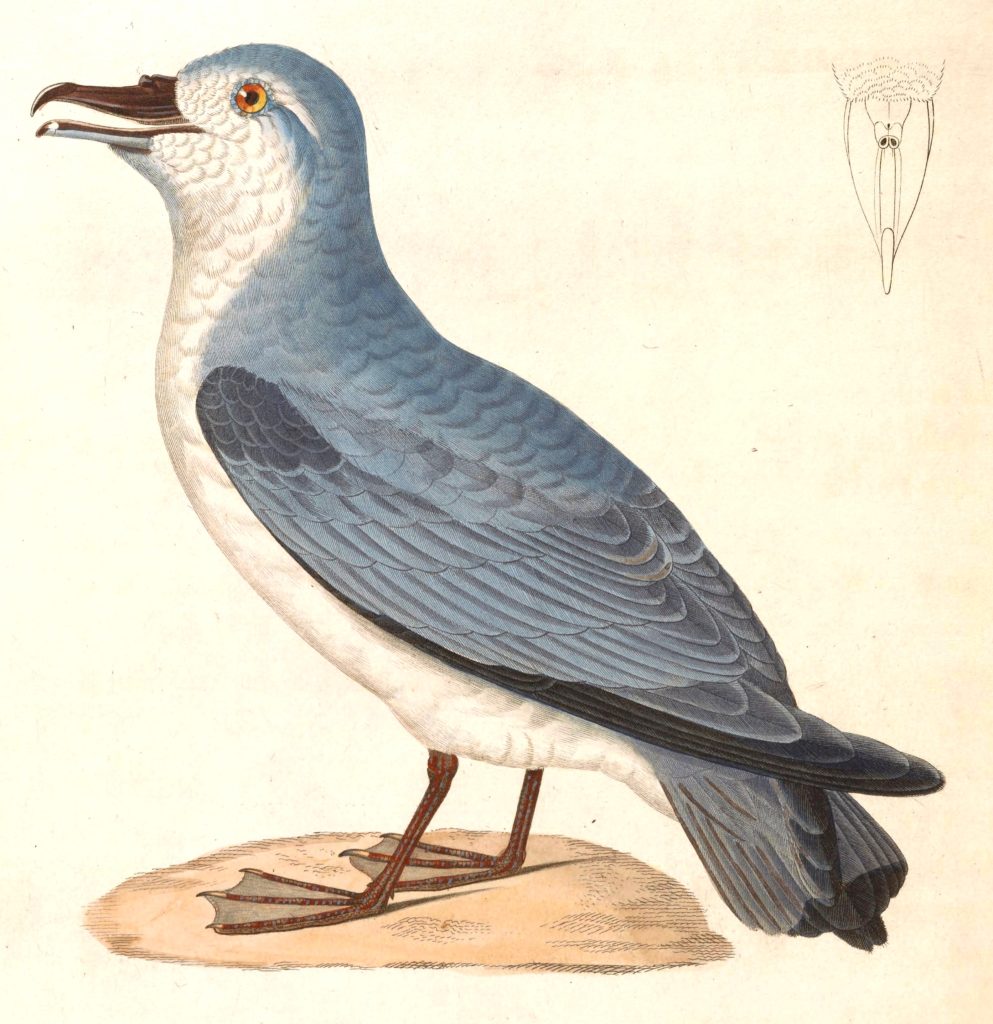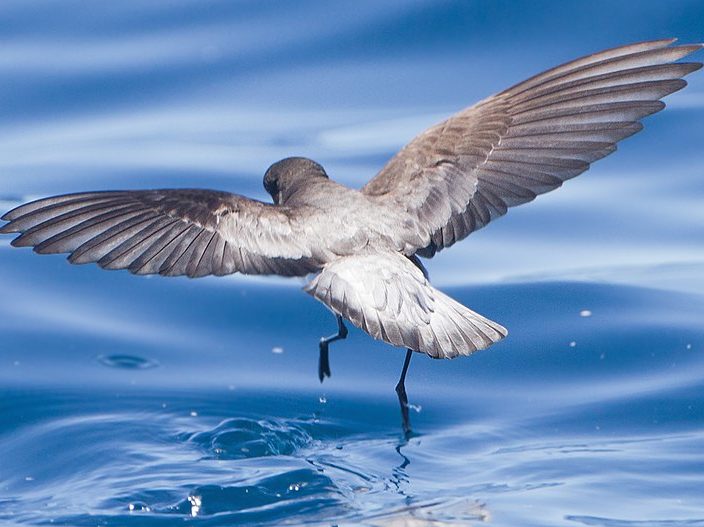A survey of 71 islands in southern Fiordland in the summer of 2017, by researchers from Museum of New Zealand Te Papa Tongarewa and the Department of Conservation, found forty breeding colonies of three petrel species spread across 35 of those 71 islands, according to a report just published in Notornis, the scientific journal published by ‘Birds New Zealand’.

Chalky and Preservation Inlets were found to have many more, and far larger, petrel colonies than has previously been reported, particularly for sooty shearwaters and broad-billed prions.
It’s great news for the future of sooty shearwaters, broad-billed prions and mottled petrels and it also shows just how much the birds benefit from and depend on the ongoing control of stoats.
“The glaciated landscapes of Fiordland, in southwestern New Zealand, contain many hundreds of islands that are within the broad breeding ranges of at least sev species of burrow-nesting petrels.
While a few Fiordland breeding sites of mottled petrel have been known for several decades, information on burrowing seabird diversity, distribution, and colony sizes in the region remain poorly known, and many authors have recommended the need for further surveys.”

“We here report the findings of a survey for petrels on islands in Chalky Inlet, Preservation Inlet and associated waterways in November and December 2017, and compare and contrast these results with those from the 2016 survey. Information on petrels breeding on the Green Islets, 16 km south-east of Preservation Inlet, is also presented based on surveys undertaken in December 2013 and 2018.”
Chalky Inlet and Preservation Inlet and their connected inland waterways are the southernmost fjords in Fiordland.
“Each of the two major inlets is partially protected from the open sea by a single large island (Chalky Island and Coal Island respectively), and between them they contain more than 70 vegetated islands. Conservation management on these islands has included some of the earliest stoat eradications in New Zealand, on Chalky Island (514 ha) and the Passage Islands (177 ha) in 1999, followed by Coal Island (1,163 ha) in 2005, and subsequent translocations of seven species of rare and threatened land birds to these islands.”
Stoats are known to be strong swimmers and all the islands in Chalky and Preservation Inlets are within the swimming range of stoats.
“Stoats are far more capable swimmers than other predatory mammals present in Fiordland, and it is the only species present that is able to colonise the majority of islands without human assistance. Several features of petrel behaviour and breeding ecology render them highly vulnerable to stoat predation, including burrow-nesting, low breeding output (a maximum of one chick per pair per annum) and colonial nesting.”
“Until their eradication, stoats were resident on the two most seaward islands (Chalky Island and Coal Island), and they have been detected on at least 11 islands that are further inland. Apart from sites exposed to extreme wave action, it is likely that stoats have periodically reached all the islands in these waterways. Chalky and Coal Islands, and both of the Passage Islands, plus Steep-to Island (58 ha) in Preservation Inlet are now considered to be free of all introduced mammals. Self-resetting traps with lures designed to attract both stoats and rats are maintained on many of the smaller islands in the two inlets.”
Petrel burrow entrances were searched for and counted on each island during walk-through surveys.
“The proportion of each island surveyed was estimated, with the estimated number of burrows on each island based on the actual count extrapolated to allow for areas not surveyed. On large islands where burrows were apparently confined to a portion of the island, we estimated the proportion of the colony (rather than the entire island) that we surveyed.”

“The petrel species present were identified by any of: adults or chicks extracted from burrows or seen on the colony surface or in collapsed burrows; vocalisations from birds inside burrows; corpses, plucked feathers (by New Zealand falcons) or failed eggs on the colony surface; burrow location and burrow entrance size. Any intact eggs were measured as a guide to species identification.”
Sooty shearwater was the most widespread and abundant species. The survey identified an estimated 23,425 burrows on 25 islands.
“Broad-billed prions were breeding on nine islands (9,940 burrows estimated), and mottled petrels on five islands (1,240 burrows estimated). This is a 3-fold increase in the number of petrel colonies in Chalky and Preservation Inlets and associated waterways identified in published accounts, and the first estimate of the number of burrows on each island.”
Petrel breeding islands ranged in size from 0.02 to 727 hectares and were up to 29 km from the open sea.
“We found mottled petrel burrows, sometimes within a couple of metres of the shore, mainly on small low-lying islands, and usually among dense ground cover of moss and ferns. In contrast, sooty shearwater burrows (which had larger entrances) were mainly found in areas with less ground cover on the upper slopes and island summits of larger islands. Broad-billed prion burrows were smaller than for the two other species and were mainly found on the tops of steep-sided stacks on exposed outer coasts.”
The authors also attempt to explain the distribution of petrel colonies on these islands based on stoat and petrel behaviour and ecology in the context of the ‘refugia from resident stoats’ hypothesis.
“This hypothesis predicts that populations of migratory petrels will persist for many decades on islands that are within swimming range of stoats, provided that the islands are too small to provide sufficient permanent food resources to sustain a resident stoat population year-round. It is assumed that stoats are unable to extirpate a petrel population during a single invasion due to a proportion of the petrel population being absent from the colony (particularly pre-breeders), and (at larger colonies) due to the sheer number of potential prey present, with the stoats having to vacate the island once the migratory petrels depart at the end of the breeding season.”
The minimum island size that can support a resident stoat population after the petrels depart is unclear.
“On small islands it is assumed that stoat invasion events have been too brief and infrequent to kill all individuals of all age classes of the breeding petrels during the approximately 120 years since stoats reached southern Fiordland. In contrast, petrels will be rapidly extirpated from islands that are large enough to sustain resident stoats.”
Both the 2016 Dusky Sound survey and the 2017 survey of Chalky and Preservation Inlets support the hypothesis.
“The 2016 Dusky Sound survey revealed that breeding populations of migratory petrels (mottled petrel and sooty shearwater) had persisted on more than 40 islands that were less than 100 hectares in size despite all but one island (‘Centre Island’) considered likely to have been invaded by stoats on one or more occasion. No evidence was found of petrels persisting on larger islands in Dusky Sound that have (or had) resident stoat populations.”
“A similar pattern was found in the 2017 survey of islands in Chalky and Preservation Inlets, with colonies of migratory petrels found on about 34 islands <170 hectares and within swimming range of stoats. Stoats have been observed or trapped, or their scats and prey remains found, on at least 11 of these small to medium-sized petrel breeding islands.”
The authors believe that long-term survival of most of these colonies is dependent on ongoing control of stoats on islands in the southern fjords.
“The persistence of remnant petrel colonies on small islands is probably due to stoats being infrequent invaders that are unable to persist when migratory petrels depart at the end of the breeding season.”
So how many petrels of each species are there likely to be in southern Fiordland?
“The 23,425 sooty shearwater burrows estimated on 26 islands in Chalky and Preservation Inlets is similar in magnitude to the 21,400 burrows estimated on islands in Dusky Sound. When combined with the additional 16 breeding sites reported between Milford and Breaksea Sounds, it is likely that up to 50,000 pairs of sooty shearwaters breed in Fiordland. Although much larger than other known populations north of Foveaux Strait, the combined Fiordland sooty shearwater population is far smaller than individual colonies on Whenua Hou/Codfish Island, Taukihepa/Big South Cape Island, Putauhinu Island, Poutama Island, and Snares Islands/Tini Heke to the south, all of which exceed 170,000 pairs or burrows.”
Mottled petrels, an endemic species, are less numerous.
“The 1,240 mottled petrel burrows estimated on five islands in Chalky and Preservation Inlets is considerably fewer than the 5,500 burrows estimated on 12 islands in Dusky Sound. Larger colonies of this New Zealand endemic species (of 10,000–160,000 pairs) have been reported from Whenua Hou/Codfish Island, Taukihepa/Big South Cape Island, and Snares Islands /Tini Heke.”
“In contrast to the two larger petrel species, the broad-billed prion colonies in Chalky Inlet are far larger than those reported elsewhere in Fiordland. We estimated 9,700 burrows at 8 sites in Chalky Inlet, compared to 240 burrows (1 site) in Preservation Inlet and 560 burrows (2 sites) in Dusky Sound.”
Intriguingly, the researchers also found evidence that another petrel species may be breeding in Fiordland, although its breeding location remains a mystery.
“The capture of a grey-backed storm petrel with a bare brood patch offshore from Chalky Island on 22 November, along with sightings of birds at two other widely-spread spotlighting locations, adds to the body of evidence that this species breeds in Fiordland. Although no breeding grounds have yet been found, records of grey-backed storm petrels continue to accumulate throughout Fiordland”.

“Fiordland is more than 480 km from the nearest known breeding site for grey-backed storm petrel (Auckland Islands). When combined with the complete absence of records of any other storm petrel species from Fiordland, these numerous records indicate that grey-backed storm petrels are predictably present in the region, rather than being vagrants from a distant population.”
There is another mystery in southern Fiordland too – where is the main breeding colony of broad-billed prions?
“Prions are more vulnerable to stoats than the two migratory petrel species, as they are not only smaller, but they visit colonies throughout the year and so transient stoats that reach prion breeding sites may persist longer than at sites where migratory petrels (e.g. sooty shearwater and mottled petrel) are absent for 3–4 months in winter. Broad-billed prion colonies in Fiordland have become confined to tiny stacks on the exposed outer coast, where extreme wave action is presumed to provide protection from stoat invasion.”
“While the number of colonies and the number of birds surviving in Fiordland is substantially higher than reported by Jamieson et al. (2016), the colonies so far located in Fiordland are still far too small to have been the main source of the estimated 200,000 broad-billed prions killed in a storm in July 2011. The largest known broad-billed prion colony on Rangatira Island in the Chatham Islands was not impacted by this mortality event, and the origin of these birds remains a mystery.”

